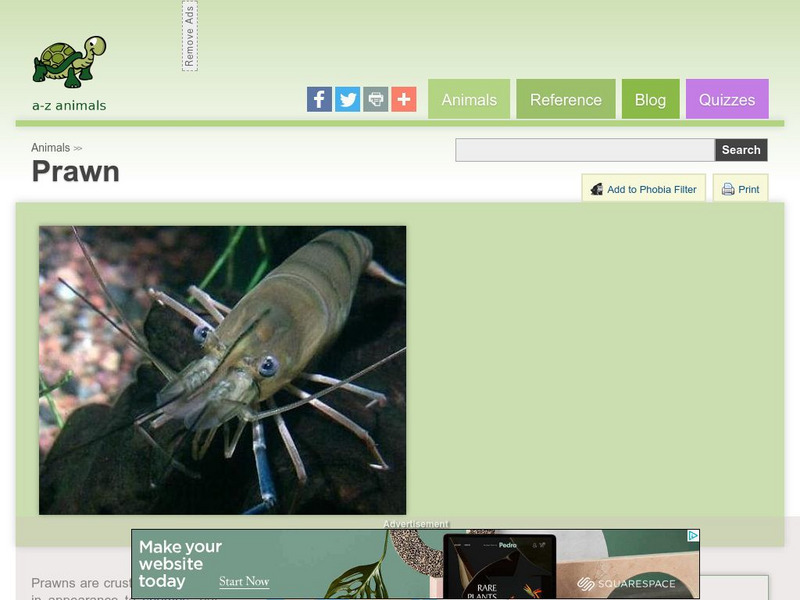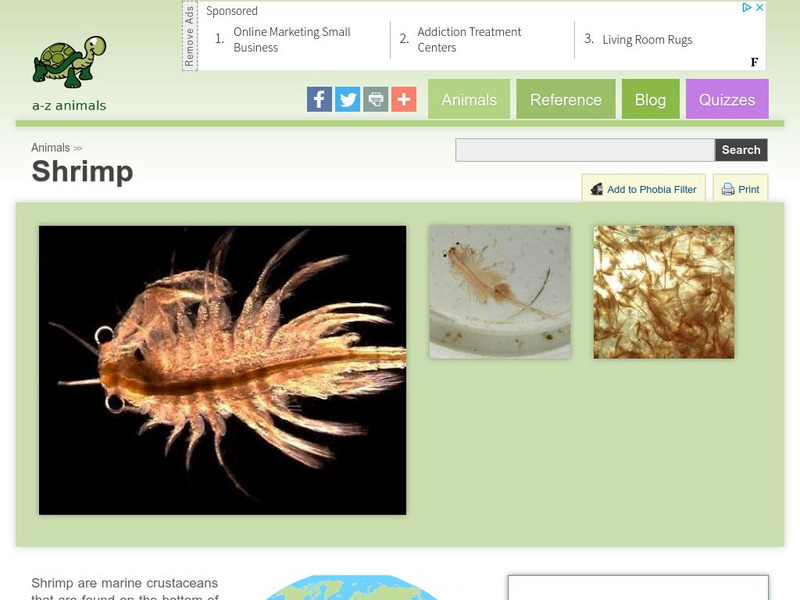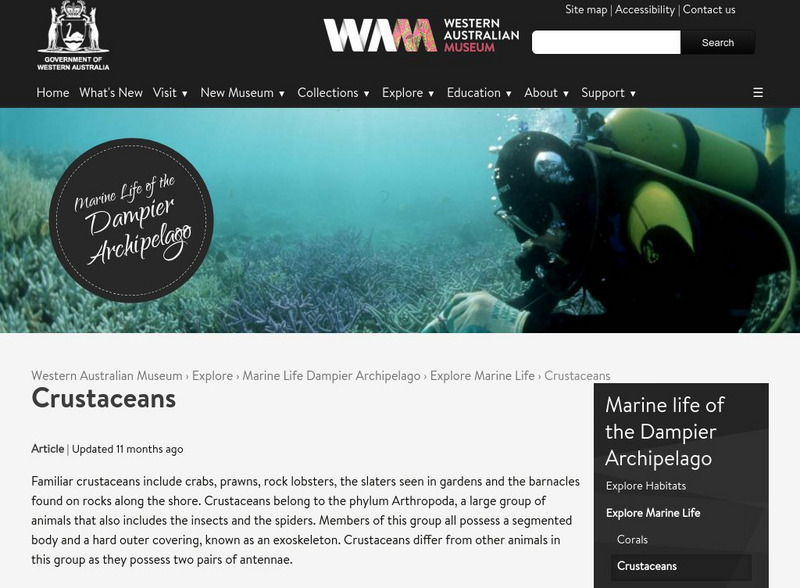CK-12 Foundation
Ck 12: Life Science: Crustaceans
[Free Registration/Login may be required to access all resource tools.] Crustaceans are a large group of arthropods, consisting of almost 52,000 species. The majority of crustaceans are aquatic. A few groups have adapted to living on...
A-Z Animals
A Z Animals: Animal Facts: Prawn (Dendrobranchiata)
Provides photograph and facts about the prawn, a crustacean. Discusses physical characteristics, where they are found, diet, and how humans use them.
Saint Louis Zoo
Saint Louis Zoo: Crustaceans
Discover fun facts and learn about the habitat, diet, and appearance of crustaceans.
Ducksters
Ducksters: Animals for Kids: Invertebrates
What is an Invertebrate? Kids learn about these animals that have no backbone such as worms, mollusks, insects, and spiders.
A-Z Animals
A Z Animals: Animal Facts: Woodlouse (Oniscidea)
This entry identifies the defining characteristics of the oniscidea, otherwise known as the woodlouse.
University of Michigan
Critter Catalog: Myriapods
This informative site provides a description of the characteristics of Myriapods. Local animals (southeastern Michigan) in these groups are then examined in further detail. Pictures and classification groupings are included in this site.
A-Z Animals
A Z Animals: Animal Facts: Shrimp (Caridea)
Provides photographs and a fact card about shrimp. Discusses where they are found, the variety of species, diet, predators, reproduction, and their similarities and differences from prawns.
University of Southern California
Structure of Matter: Animals
A slide show that demonstrates the development of physical structure in the animal world, moving from sponges through mammals.
Cornell University
Cornell University: The Crayfish Review
An excellent interactive site about the physical features of thier crayfish and their functions. This site was created for a college class, but can be used by all ages.
TED Talks
Ted: Ted Ed: How Life Came to Land
This video explores arthropods, who first made the transition from water to land and who outnumber all terrestrial animals. [5:28] Followed by a short quiz and a list of additional resources to explore.
Environmental Education for Kids
Eek!: Alien Profile: Spiny Water Flea
Learn how the spiny water flea first came to North America, where it has spread to, how to identify it, how it is dispersed, the damage it causes, and what can be done to fight this invasive species.
Wikimedia
Wikipedia: Arthropod
Wikipedia offers information on arthropods, the largest phylum of animals. Includes scientific classification chart and image.
Unique Australian Animals
Unique Australian Animals: Yabby
The Yabby is an Australian freshwater crayfish. Read the description at this website to learn more.
Other
Western Australian Museum: Sponges: Marine Life of the Dampier Archipelago
Did you know that sponges are one of the simplest animals that exist? Learn about these multi-cellular animals and their importance to the marine environment.
Monterey Bay Aquarium
Monterey Bay Aquarium: Acorn Barnacle
Meet the acorn barnacle and learn cool facts, its natural history, and conservation status.
Microscopy UK
Microscopy Uk: Rotifers and How to Find Them
Interesting discussion of rotifer anatomy, habitat, feeding habits, locomotion, and species.














